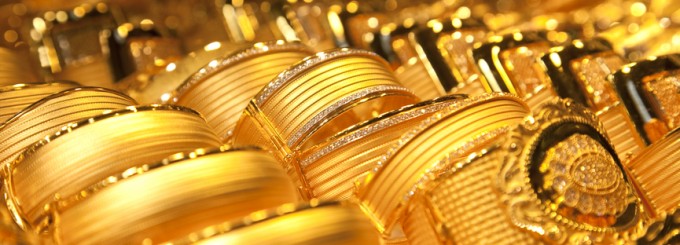4 Interesting Facts You Didn’t Know About Gold Jewelry

From Eastern Europe to the Middle East and the tombs of the Egyptian Pharaohs, people have been decorating with gold since at least four millennia ago. While humankind is still fascinated with gold’s shiny appearance and scarcity, in the past few decades scientists have discovered the numerous properties and features of this precious metal. Even though the metal has gone high-tech these days, the truth is that gold jewelry also continues to be appreciated and valued. Following are some interesting things everyone passionate about gold jewelry should know.
The gold used in jewelry is mixed with other metals
Pure gold is an incredibly soft metal, so malleable that it can even be molded with the bear hands. Since in this form it cannot be cast into rings, necklaces or other trinkets, the jewelers often mix it with copper, zinc or silver to make it more durable. The color of the other metals used in the alloy will ultimately dictate the gold’s tone and pricing. In fact, this is why you can find gold fashioned in shades of purple, blue, green, black, rose and yellow these days.
Gold was one of the first metals ever discovered
According to archeologist, gold and copper were among the first metals ever discovered by early humans, around 5,000 BC. Not only that, but they are among the few metals that don’t have a white or grayish color. In addition to the exclusive coloratura, gold also distinguishes itself by its non-magnetic properties. Because neither gold, nor the other metals used in the alloys contain iron, the easiest way to test if the metal is actually gold entails running a magnet over the jewelry. If the trinket sticks to the magnet, then it’s not really gold.
Solid gold can tarnish
One of the reasons gold is so widely appreciated is that the metal is not susceptible to tarnish. However, in reality only the 24k gold cannot be stained, whereas the other alloys can be tainted and become tarnished in time. This is why you can notice that specific dark rosy tone on the gold jewelry made during the Victorian Era. The jewelry cast during that time was made of low karat gold, which contained a lot of copper. Nevertheless, experts and jewelers alike don’t see this as a flaw, but rather as a beautiful patina that cannot be replicated.
On a side note, while this rule holds true for the Victorian gold jewelry, the same doesn’t apply in modern time. Therefore, if you want to make sure you’re gold ring, earrings or necklace doesn’t tarnish, invest in jewelry made of high karat gold. Furthermore, don’t forget to have your jewels regular cleaned by a professional.
White gold was invented in the early 1900s
In modern times, platinum was used as early as 1784 to make resilient laboratory instruments. Invented in 1910, white gold soon became a popular substitute for platinum. Most white gold jewels on the market are plated with a rhodium coating to mask some undesirable variances in color. If you’re looking to invest in white gold jewelry that features a natural white, then look for trinkets made between the 1920s and 1940s.


